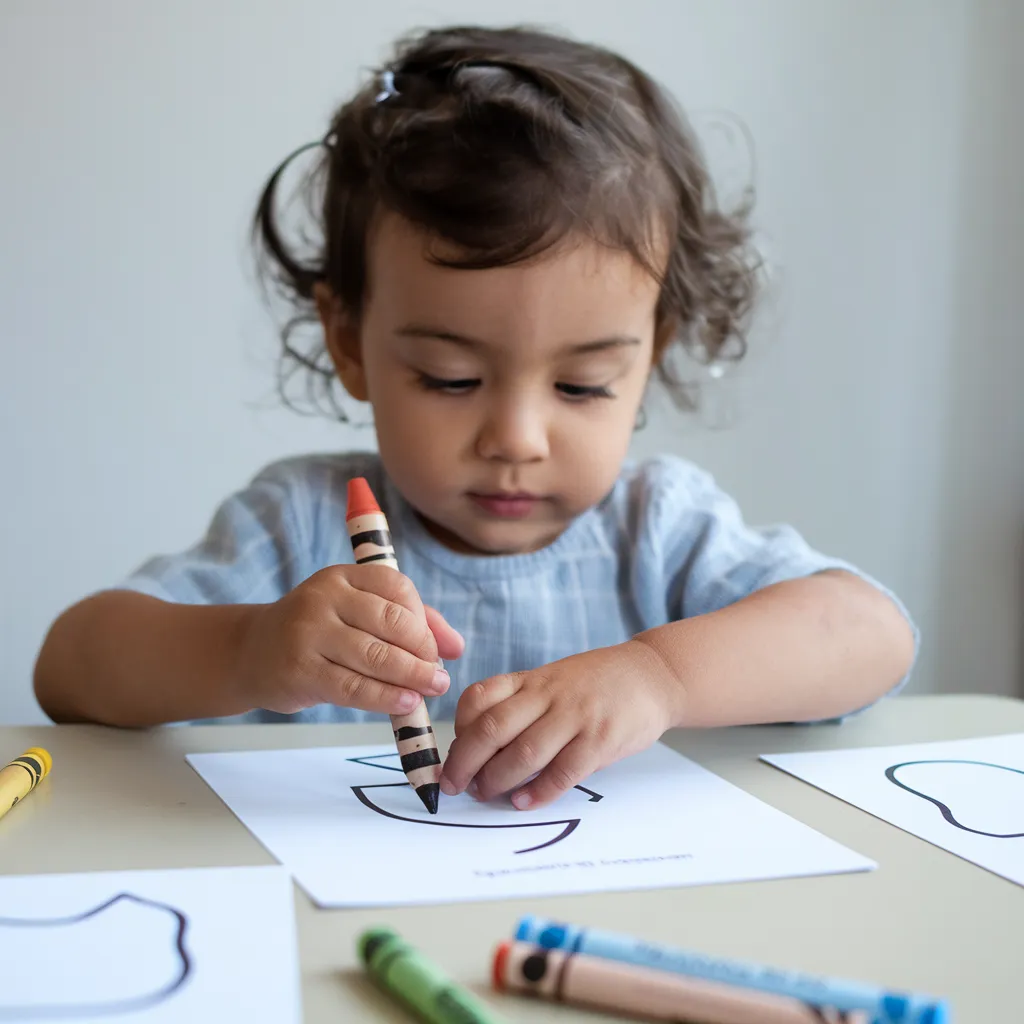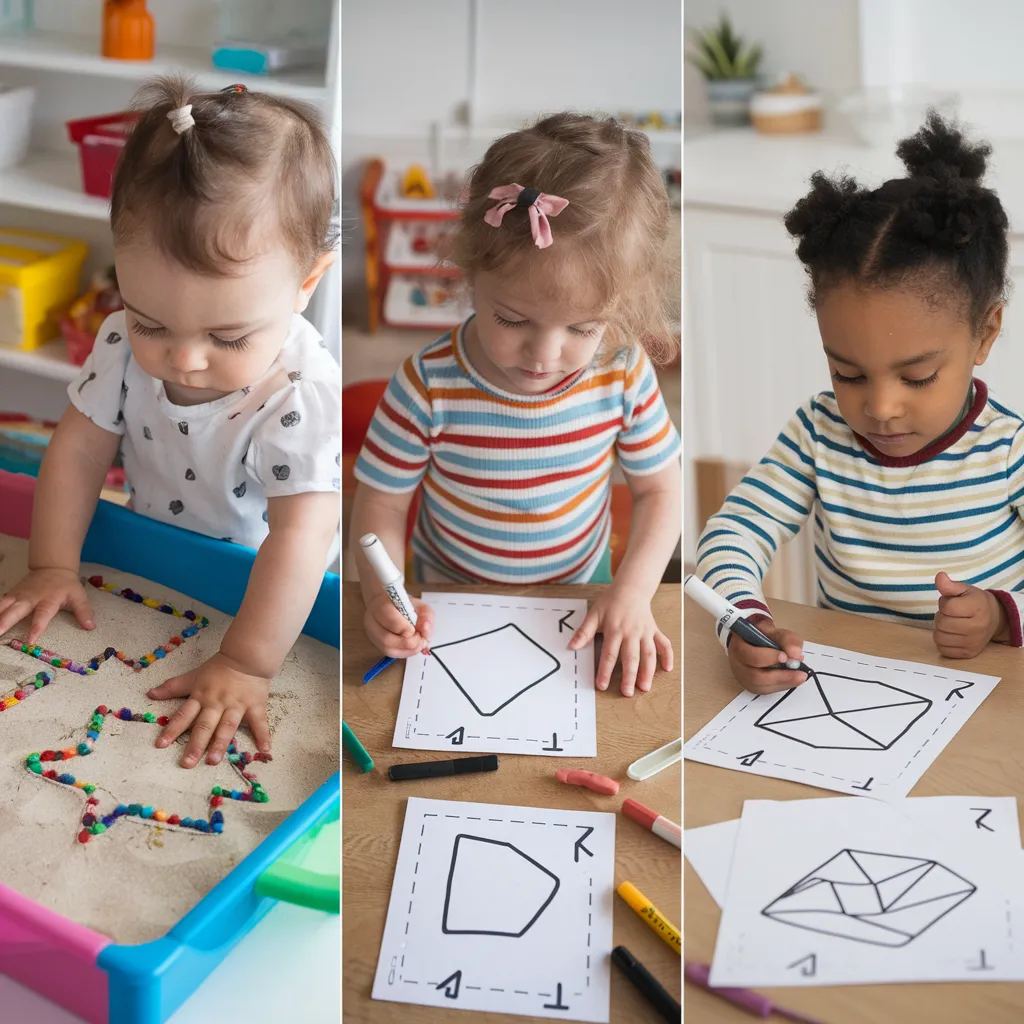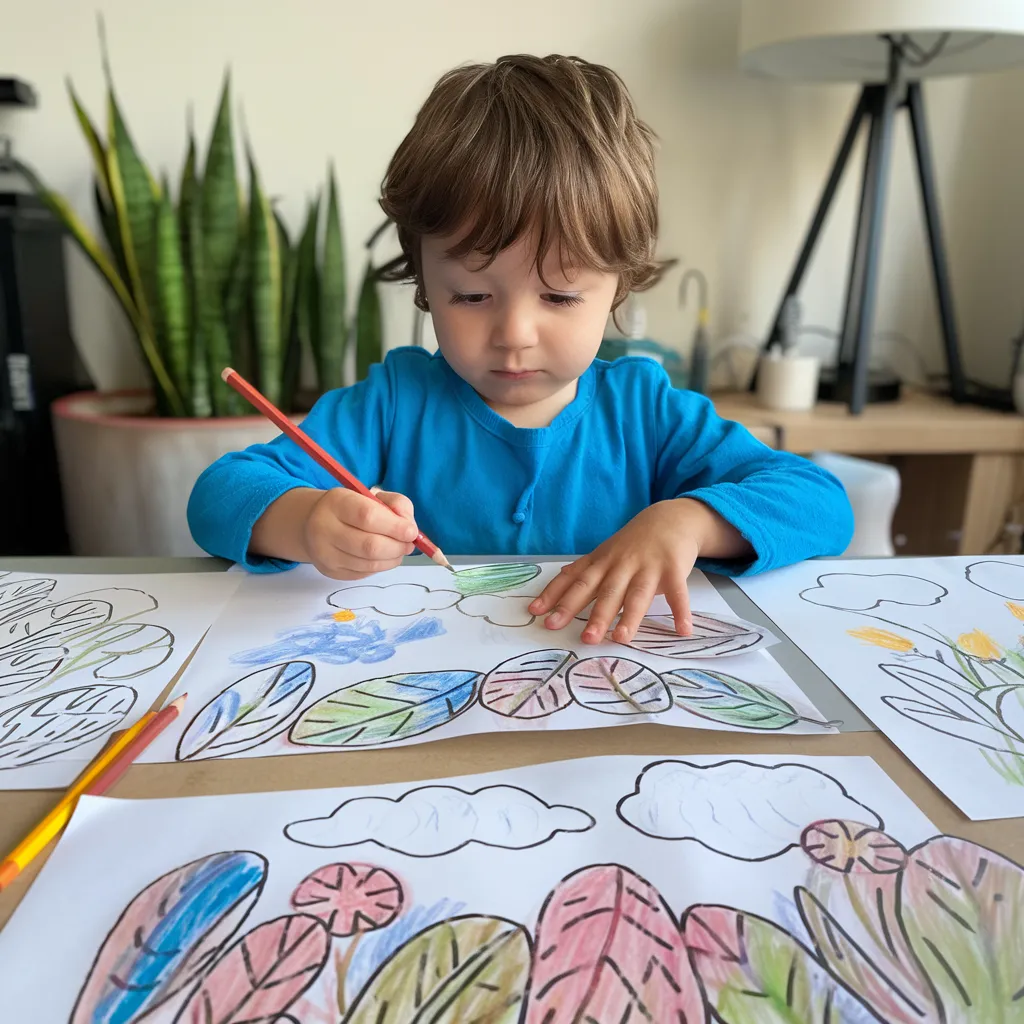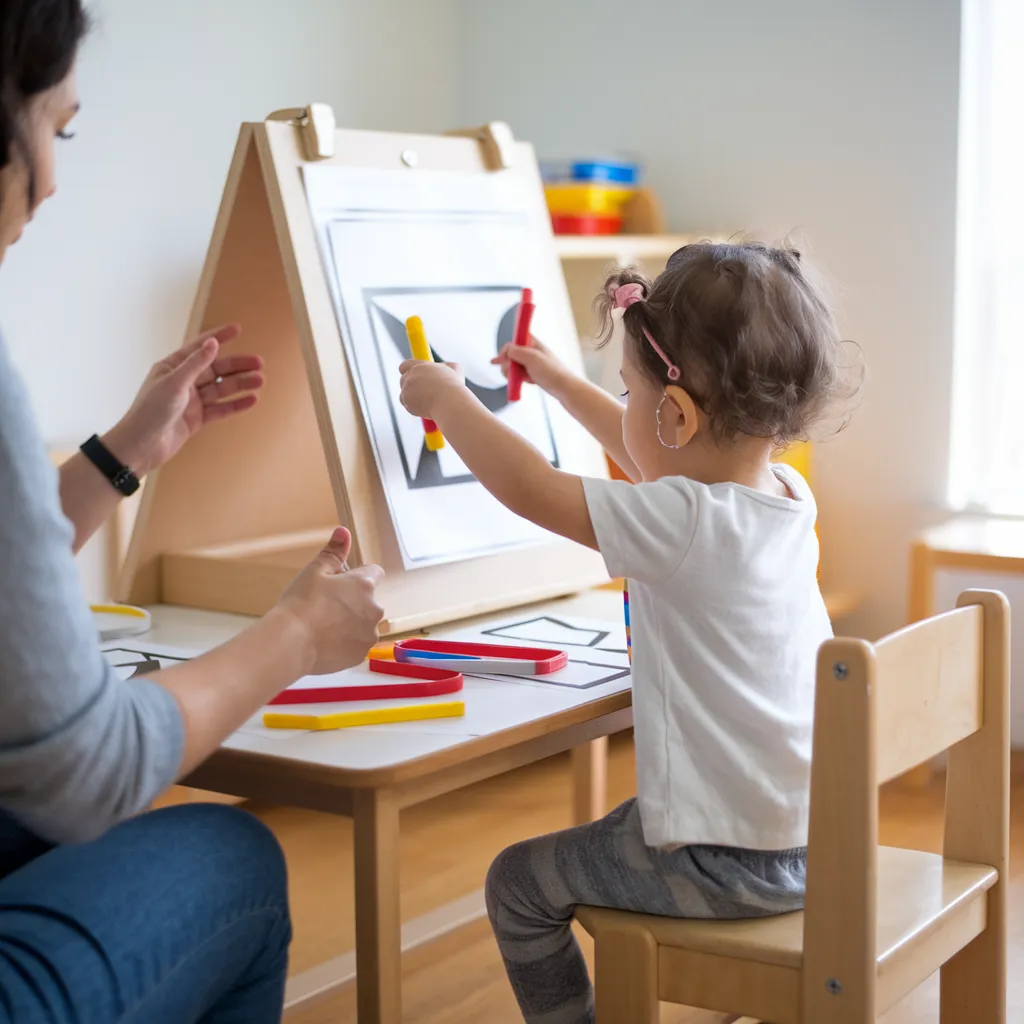Shapes tracing for kids offers a powerful foundation for early development, combining fine motor skills, cognitive growth, and pre-writing practice in one engaging activity. These seemingly simple exercises—where children follow the outlines of circles, squares, triangles and more—establish crucial neural pathways that support future academic success. Whether you’re a parent seeking home learning activities or an educator planning developmentally appropriate lessons, shapes tracing for kids provides versatile opportunities that prepare children for more complex skills like letter formation and drawing. The key lies in making these experiences playful and age-appropriate, gradually increasing complexity as children develop confidence and control. From sensory trays to digital apps, the right shapes tracing activities transform ordinary learning moments into extraordinary developmental opportunities.

Developmental Benefits of Shapes Tracing for Kids
Shapes tracing for kids contributes significantly to multiple developmental domains:
Cognitive Development
- Shape recognition: Distinguishing different geometric forms
- Spatial awareness: Understanding how shapes exist in space
- Visual discrimination: Noticing similarities and differences
- Pattern recognition: Identifying recurring geometric patterns
- Mathematical foundations: Building blocks for geometry concepts
Motor Skill Enhancement
Shapes tracing for kids builds critical physical abilities:
- Fine Motor Development
- Strengthening hand and finger muscles
- Improving hand-eye coordination
- Developing controlled small movements
- Refining pincer grip for writing tools
- Building hand dexterity and flexibility
- Pre-Writing Foundations
- Establishing proper tool grip patterns
- Learning directional movements (left-right, top-bottom)
- Developing stroke control and precision
- Building muscle memory for common writing motions
- Creating neural pathways for letter formation
- Visual-Motor Integration
- Coordinating eye tracking with hand movements
- Translating visual information into motor responses
- Developing perceptual accuracy
- Improving ability to stay within boundaries
- Building skills for copying from models
Age-Appropriate Shapes Tracing for Kids Activities
Different developmental stages require specific approaches:

Beginner Shapes Tracing for Kids (Ages 2-3)
- Sensory Tracing Experiences
- Finger tracing in sand, salt, or shaving cream
- Large floor tape shapes for finger walking
- Playdough snake-making to form basic shapes
- Light table tracing with transparent shapes
- Water painting on chalkboards or sidewalks
- Simple Shape Introduction
- Start with circles (easiest continuous motion)
- Introduce squares with clear corner guidance
- Use triangles to practice direction changes
- Create oversized shapes for broader movements
- Implement thick, bold outlines for clear boundaries
- Whole-Body Engagement
- Create giant floor shapes with rope or tape
- Develop shape-walking pathways
- Use arm movements to « air trace » large shapes
- Play « shape dance » with corresponding movements
- Create sensory shape paths for crawling or walking
Intermediate Shapes Tracing for Kids (Ages 4-5)
- Tool-Based Tracing
- Introduce thick crayons and markers
- Use tracing cards with directional arrows
- Provide dot-to-dot shape formations
- Create wipe-clean tracing boards
- Implement magna-doodle type tracers
- Expanded Shape Variety
- Add rectangles, ovals, and diamonds
- Introduce heart and star shapes
- Combine shapes to create pictures
- Implement shape size variations
- Create shape patterns for sequential tracing
- Multi-Sensory Approaches
- Use textured shape cards for tactile feedback
- Create scented markers for sensory associations
- Implement sound cues for different shapes
- Use rhythmic chants during tracing
- Develop shape songs with corresponding motions
Advanced Shapes Tracing for Kids (Ages 5-7)
- Complex Shape Mastery
- Introduce hexagons, octagons, and trapezoids
- Create compound shapes from basic components
- Develop symmetrical shape completion activities
- Implement shape rotation and orientation variations
- Create 3D shape nets for tracing and folding
- Precision Development
- Use progressively thinner lines
- Provide smaller shape templates
- Create multi-step shape combination challenges
- Implement timed tracing challenges (when appropriate)
- Develop partially visible shape completion activities
- Application Extensions
- Create shape-based picture compositions
- Develop shape tracing puzzles and mazes
- Implement shape pattern completion activities
- Create geometric art with traced components
- Develop shape-based coding and sequencing activities
Creative Approaches to Shapes Tracing for Kids
Keep engagement high with these innovative strategies:

Thematic Shapes Tracing for Kids
- Nature-Inspired Tracing
- Leaf shape outlines
- Flower and petal formations
- Cloud and raindrop shapes
- Animal track patterns
- Seasonal shape collections (snowflakes, beach shells)
- Vehicle and Transportation Shapes
- Wheel circles and tracing
- Car and truck outlines
- Train and track formations
- Boat and ship shapes
- Airplane and helicopter outlines
- Food and Cooking Shapes
- Fruit and vegetable outlines
- Cookie and sandwich shapes
- Pizza slice triangles
- Plate and utensil shapes
- Recipe-based shape collections
Interactive Shapes Tracing for Kids
- Collaborative Tracing Activities
- Partner shape completion challenges
- Group shape murals with individual contributions
- Shape relay races with tracing components
- Shape scavenger hunts with tracing verification
- « Shape of the day » community projects
- Digital Tracing Experiences
- Age-appropriate tracing apps with feedback
- Interactive whiteboard shape activities
- Projected floor games with whole-body tracing
- Video modeling with pause-and-trace opportunities
- Digital-physical hybrid activities
Implementation Strategies for Shapes Tracing for Kids
Maximize effectiveness with these practical approaches:
Creating an Optimal Tracing Environment
- Physical Setup Considerations
- Ensure proper seating with feet supported
- Position tracing surface at appropriate height
- Provide adequate lighting without glare
- Create distraction-minimized spaces
- Offer both vertical and horizontal tracing options
- Material Selection
- Choose developmentally appropriate tools
- Provide proper grip supports when needed
- Use high-contrast tracing templates
- Offer variety in tracing media
- Create durable, reusable tracing resources
Progress Monitoring and Support
- Assessment Approaches
- Observe grip development and refinement
- Track progression through shape complexity
- Note accuracy improvements over time
- Monitor frustration levels and adjusting difficulty
- Document crossover skills to drawing and writing
- Support Techniques
- Offer hand-over-hand guidance initially
- Provide verbal directional cues
- Implement gradual scaffolding removal
- Use encouraging, process-focused feedback
- Create success-guaranteed starting points
Troubleshooting Common Challenges with Shapes Tracing for Kids

Address typical difficulties with these approaches:
Motivation and Engagement
- Interest-Building Strategies
- Connect shapes to child’s interests and preferences
- Create game-based tracing challenges
- Implement meaningful projects using traced shapes
- Offer choice within structured options
- Celebrate progress with specific praise
- Attention Span Extension
- Start with brief sessions (2-5 minutes)
- Gradually increase duration as skills develop
- Alternate between different tracing modalities
- Create movement breaks between tracing activities
- Position tracing within engaging larger activities
Physical Challenges
- Grip Development Support
- Provide appropriately sized tools for hand size
- Offer grip supports or triangular crayons
- Strengthen hand muscles through complementary activities
- Demonstrate and gently reposition improper grips
- Create vertical tracing opportunities to promote proper wrist position
- Coordination Difficulties
- Begin with finger tracing before tool use
- Create stabilized paper systems to prevent shifting
- Use raised line boundaries for tactile feedback
- Implement tracing templates with starting dots
- Provide heavier tracing tools for increased feedback
Conclusion
Shapes tracing for kids provides a foundational skill that supports numerous developmental domains while preparing children for academic success. Through playful, age-appropriate activities that gradually increase in complexity, parents and educators can help children develop essential fine motor skills, visual processing abilities, and pre-writing foundations. The key lies in keeping tracing experiences positive, pressure-free, and embedded within meaningful play contexts. Start with simple, large-scale activities using fingers and whole-body movements before gradually introducing tools and more complex shapes. Remember that each child develops at their own pace—celebrate small improvements and maintain a playful approach that nurtures both skill development and a love of learning. With consistency and creativity, these early shape tracing experiences will establish neural pathways that support writing, drawing, and countless other skills for years to come.
10 Powerful Ways How Tracing Helps Handwriting Development in Children
Frequently Asked Questions
When should my child start tracing shapes?
Most children are ready for introductory shape tracing experiences around 2 to 2.5 years of age, though readiness varies considerably. Look for signs like interest in drawing and scribbling, ability to hold chunky crayons or markers, and developing attention for short activities. Begin with finger tracing in sensory materials like sand or shaving cream before expecting tool-based tracing. Start with large, simple shapes like circles, using whole-arm movements before progressing to hand and finger control. Remember that early « tracing » might look more like random marks than accurate line-following—this exploration phase is developmentally appropriate and valuable. The focus should always be on enjoyable exploration rather than precision.
Which shapes should kids learn to trace first?
Start with circles, as they involve continuous motion without challenging direction changes or corners. Circles are typically the first shapes children can successfully reproduce. Next, introduce straight-line shapes, beginning with vertical lines (which are generally easier than horizontal lines for most children), then horizontal lines, and finally diagonal lines. Once these basic lines are comfortable, introduce squares and rectangles (which combine horizontal and vertical lines), followed by triangles (which add diagonal lines). Save more complex shapes like diamonds, stars, and hearts for later stages when basic shape mastery is established. Always introduce new shapes through multi-sensory experiences—feeling, walking, and creating with the shape—before attempting paper-based tracing.
How can I help my child who struggles with shape tracing?
First, ensure activities match your child’s developmental level—frustration often indicates the task is too advanced. Scale up the size of tracing activities, using floor-based or wall-mounted large shapes before table activities. Try different sensory materials like finger tracing in pudding or sand before using pencils or markers. Consider hand strength development through activities like playdough squeezing, paper crumpling, or spray bottle use. For difficulties with properly gripping tools, try adaptive options like triangular crayons or pencil grips. Provide hand-over-hand guidance initially, gradually reducing support as confidence builds. If struggles persist beyond age-appropriate expectations or include unusual pencil grip, hand tremors, or extreme avoidance, consider consulting with an occupational therapist for specialized assessment and strategies.
How do I know when my child is ready to move from shape tracing to letter tracing?
Look for these readiness indicators: consistent success with complex shapes like triangles and diamonds; ability to stay within boundaries while tracing; proper grasp of writing tools; sustained attention for 5-10 minutes of fine motor activities; and demonstrated interest in letters or writing. Most children are ready for letter tracing between 3.5-5 years, though individual development varies significantly. Create a gradual transition by introducing letter-like shapes (curves, lines, circles) before actual letters. Begin with uppercase letters, which generally involve simpler strokes than lowercase letters. Remember that shape tracing and letter tracing can overlap developmentally—you don’t need to completely master all shapes before introducing any letters. Following your child’s interest while ensuring appropriate challenge levels provides the best guidance for this transition.
